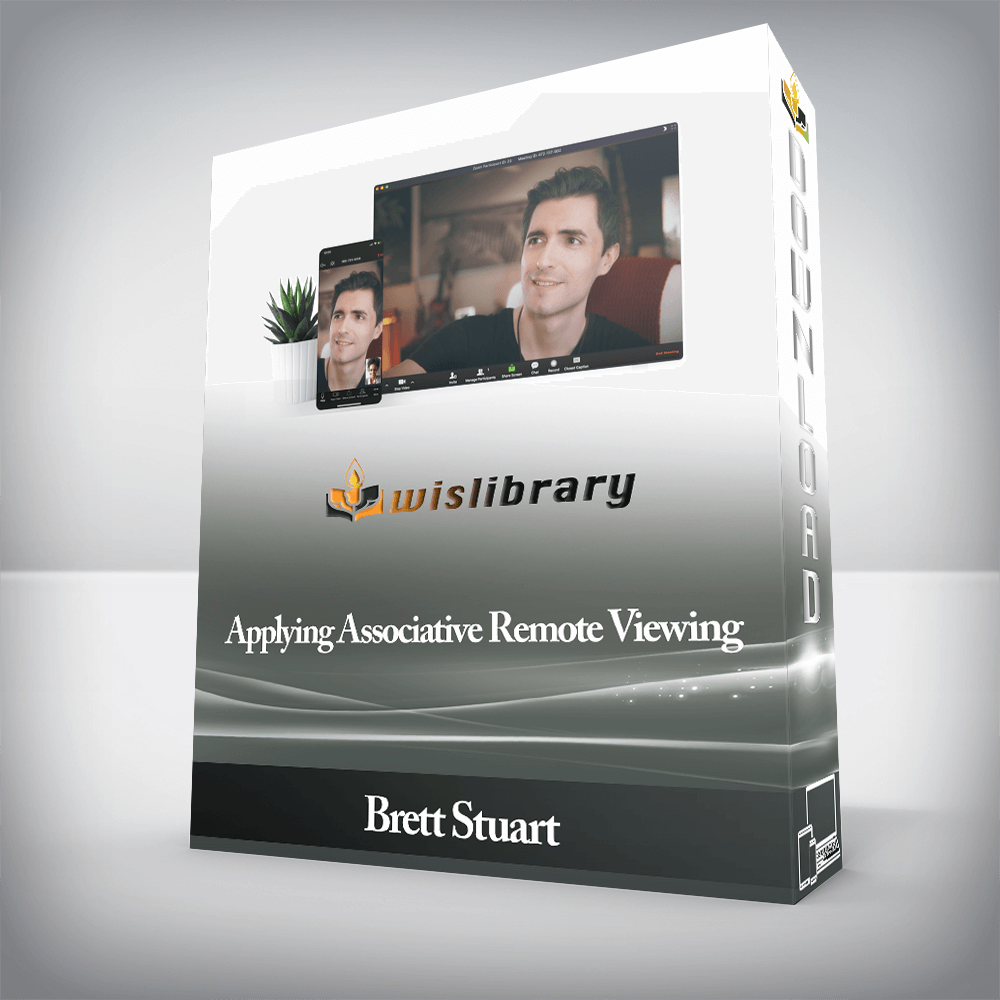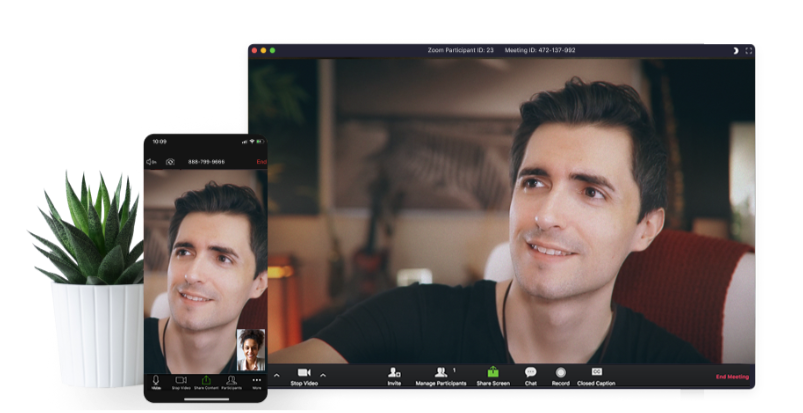

In Part 1, I cover a brief history of remote viewing, and how the original scientists involved in developing the skill, adjusted the process to successfully make money in the market. I then break down the differences between standard and associative remote viewing, before jumping right into the first foundational step of the process, creating effective blind pools and target pairs.
In Part 2, I jump into the various ways remote viewing tasks can be applied with an associative problem-set. I go step-by-step through the four primary areas of use, and how the tasking changes depending on the project type. From here, we jump right into the remote viewing skill itself, and I break down the precise information you’ll need to begin your first ARV session.
Length: 03:27
Description: In this video, Brett covers standard remote viewing protocol, the agreed upon steps that differentiate it from other psychical techniques, and defines some terms to start off the course.

Length: 07:39
Description: There are hundreds of declassified success stories when it comes to remote viewing. In this video, Brett covers one of the first recorded cases and a brief history of the remote viewing research program.

Length: 06:02
Description: Brett discusses how remote viewing was used by the original physicists to make money in the stock market, and a brief history of its use up to present day in both the private sector and within various universities.

Length: 03:45
Description: In this video, Brett reviews the standard remote viewing format in detail. This is important to establish first, since it will allows us to compare it with the ARV format in the next video.
Download: (right-click and select Save link as…)
RV Steps Presentation Slides

Length: 08:52
Description: There are two primary methods of ARV, and Brett outlines the differences between each, along with how they are commonly applied in the associative tasking format.
Download: (right-click and select Save link as…)
ARV Steps Presentation Slides
Cueing Types Presentation Slides

Length: 05:15
Description: In the next few videos, Brett begins discussing the first foundational ingredient required to start an ARV task: Target Pairs and Blind Pools.
Length: 07:43
Description: Choosing photos for your ARV target pairs is an incredibly important aspect of the setup process. Brett discusses how site ‘numinosity’ plays a significant role, and how it can be integrated into the process.
Length: 06:12
Description: The first video of a two part video that covers how to fill out the target pair profile sheet. Profiles encapsulate information about each photograph in a target pair, which has beneficial uses in each of the ARV steps.
Download: (right-click and select Save link as…)
Common Archetypes Presentation Slide
Length: 05:36
Description: The second video of a two part video that covers how to fill out the target pair profile sheet. Profiles encapsulate information about each photograph in a target pair, which has beneficial uses in each of the ARV steps.
Download: (right-click and select Save link as…)
Concept-Chains Presentation Slide
Length: 04:23
Description: In this video, Brett discusses why photo profiles are important in creating optimal target pairs, the remote viewing process itself, and how they can be used to increase solo-judging proficiency.
Length: 50:13
Description: Brett goes in-depth to cover exactly how each target pair should be created, the thought processes that occur when creating profiles, and a few tips and tricks to get you started on creating the blind pool you’ll be using for the rest of the course.
Download: (right-click and select Save link as…)
Target Pair Profile Sheet
Word Descriptor List
Length: 04:02
Description: In this video, Brett introduces the concept of cueing for precognitive ARV and how to address the first major hurdle viewers face in the process, which is outcome uncertainty.
Length: 08:01
Description: Using the precognitive ARV cueing strategy, Brett outlines how to select market related targets and set up photo associations with reference numbers that can then be handed off to a remote viewer.
Download: (right-click and select Save link as…)
p-ARV Cue Outline Slide
Length: 03:30
Description: Aside from market-related projects, accurately determining the winner of an upcoming sports game is a popular target for precognitive associative remote viewing.
Length: 10:45
Description: In the next few videos, Brett dives into the current-correct ARV method. This video address three of the most common challenges that viewers face when attempting to use this target formalization process and how to overcome them.
Download: (right-click and select Save link as…)
cc-ARV Cue Outline Slide
Length: 5:48
Description: The cc-ARV method takes a more direct approach than p-ARV, and in this video you’ll learn how to setup the formalization cue, assign current-correct associations, and generate a reference number for remote viewers.
Download: (right-click and select Save link as…)
cc-ARV Standard Financial Cue Slide
Length: 7:00
Description: There are a number of challenges when it comes to applying RV forecasts in the market. In this video, Brett discusses a few advanced methods to expand upon the cc-ARV cue to incorporate market indicators.
Download: (right-click and select Save link as…)
cc-ARV Advanced Futures Cue Slide
cc-ARV Advanced FOREX Cue Slide
Length: 2:48
Description: Similar to how p-ARV can be used for sports betting projects, the cc-ARV method also can be arranged to forecast the winner of upcoming sporting events.
Length: 12:12
Description: For the first time, Brett is sharing ground-breaking strategies to employ cc-ARV in a manner similar to map-dowsing. You’ll learn how to setup a project to narrow down an object’s location with latitude and longitude coordinates.
Length: 6:27
Description: In this video, Brett discusses how cc-ARV can be utilized to glean information regarding personal questions that often arise during your every-day life.
Download: (right-click and select Save link as…)
cc-ARV Safety Net Qualifier Slide
Length: 30:38
Description: In the next three videos, Brett dives into the short-form method that he personally employs for all of my ARV projects. This first video explores the first step in the process, which is connecting with the information pattern through ideogram decoding.
Download: (right-click and select Save link as…)
Remote Viewing Template I/A/B
Decoding Word Descriptor List
Assignment: Print out and use the Remote Viewing Template I/A/B to practice decoding ideograms. I recommend only running two reference numbers per day. Use the numbers below to start each practice session. Once complete, you can click on the number below and it will open up a new window and show you the associated photograph for feedback. Each photograph only has 2 archetypal gestalts, either land, water or structure. Your goal is to accurately decode the ideogram two times and correctly acquire the two gestalts in the photo.
Length: 18:32
Description: Moving forward to the second aspect of the short-form method, Brett discusses how to access low-level descriptive information in your remote viewing session and draw basic diagrammatic renditions of the site.
Download: (right-click and select Save link as…)
Associative Remote Viewing Template
Assignment: In this assignment you’ll use the Associative Remote Viewing template to complete S1, S2 and S3. I recommend running only one practice session per day. You can click on the button below after you finish your session to view feedback. Look over your ideogram feeling, gestalt, sensory descriptors and visual drawings to compare them to the photograph and evaluate how well you did after each session.
Length: 18:45
Description: In this final video, Brett illustrates how to complete a full short-form RV session and access high-level information about the site. He also shows a few personal examples of his work against real-world targets.
Assignment: In this assignment you’ll add concept chains to your practice session work. Again, I only recommend performing one session per day. Make sure to evaluate the photo feedback afterwards and compare your ideogram feeling, gestalt, sensory descriptors, visual drawings and concept chains to the verifiable information in the image. After you complete these sessions, I recommend that you continue to practice against photos until you begin to reliably produce accurate RV information.
Welcome to Brett’s latest class, where he explores the intricacies of Associative Remote Viewing, and how it can be used to solve real-world problem sets such as forecasting future stock prices, determining the outcome of a sporting event, and even using it in a manner similar to dowsing. You’ll learn the following:
An in-depth review of ARV research and its history.
Applying ARV to many different problem sets:
Cryptocurrencies and the Stock Market.
Predicting sports match outcomes.
Applying the skill in a way similar to dowsing.
Answering yes/no questions quickly.
Learn how to setup your own ARV projects by:
Developing your Associative Target Pair blind pool.
Apply a shortened RV method to determine outcomes.
Learn to simply decode the ideogram.
Employ a precise evaluation and judging system.
There are no reviews yet.
You must be <a href="https://wislibrary.net/my-account/">logged in</a> to post a review.